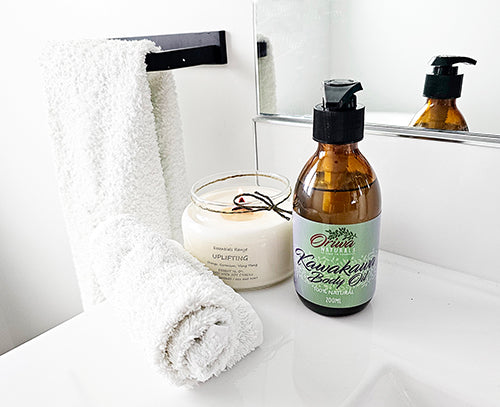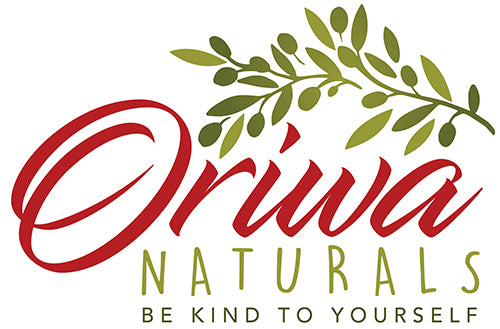Everything you need to know about New Zealand’s native kawakawa plant.
What is kawakawa?
Kawakawa, a native plant of New Zealand, holds cultural and medicinal significance. Here's what you need to know:
- Scientifically known as Macropiper excelsum, it belongs to the Piperaceae family.
- Kawakawa is a small tree or shrub that can grow up to 15 meters in height.
- The leaves, stems, and berries of the kawakawa plant are traditionally used by the Māori people.
- Kawakawa infusions or teas are made by steeping the leaves in hot water, offering a unique flavour and aroma.
- Traditional uses include anti-inflammatory properties, soothing digestion, pain relief, and treating skin conditions.
- Active compounds like flavonoids contribute to its medicinal properties.Kawakawa is used in contemporary herbal medicine and skincare products for its healing qualities.
- It holds cultural significance in Māori ceremonies, rituals, art, and carving.
- Kawakawa is valued for its cultural and medicinal importance in New Zealand.
Is kawakawa native to New Zealand?
Yes – it is native to New Zealand.
What does kawakawa mean?
The word "kawakawa" has different meanings depending on the context and the language it is derived from.
In Māori, the indigenous language of New Zealand, "kawakawa" refers to the specific plant species Macropiper excelsum. The name "kawakawa" is derived from the Māori language and does not have a direct translation into English.
However, in the Māori language, "kawa" can have multiple meanings, including "custom," "law," or "protocol." "Kawa" is often used to refer to traditional Māori customs, practices, or guidelines.
Why do kawakawa leaves have holes?
Kawakawa leaves have distinctive round holes caused by the feeding activity of the native kawakawa looper moth. Here's what you need to know:
- The kawakawa looper moth lays eggs on the underside of kawakawa leaves, and the hatched caterpillars create round holes as they feed.
- Despite the damage, kawakawa leaves remain resilient and can tolerate significant feeding without harm to the plant's overall health.
- Some researchers suggest that the holes in the leaves may benefit the plant by improving air circulation and sunlight penetration, promoting growth and plant health.
- The presence of these holes is a natural occurrence and contributes to the ecological dynamics and balance of the kawakawa plant and the ecosystem it inhabits.

How is kawakawa prepared?
Kawakawa can be prepared in different ways depending on its intended use.
- Leaf Selection: In traditional Māori and herbal medicine practices, leaves with more holes are believed to have higher potency and therapeutic value. Oriwa Naturals picks the holiest leaves!
- Concentration of Active Compounds: Feeding activity of the kawakawa looper moth on the leaves may result in a higher concentration of beneficial compounds in the damaged areas, such as essential oils and flavonoids.
- Enhanced Energy Flow: The holes in the leaves may be seen as channels for energy flow, potentially amplifying the plant's healing qualities from an energetic or spiritual perspective.
- Infusion Process: Oriwa Naturals infuses the kawakawa leaves in high-quality extra virgin olive oil, allowing it to steep for six weeks in a cool, dark place.
- Straining and Storage: After infusion, the oil is triple strained and stored in black containers until ready for use.
Why is kawakawa good for you?
Kawakawa is considered beneficial for several reasons, based on traditional uses and anecdotal evidence. It contains various compounds that may contribute to its potential therapeutic properties. Here are some reasons why kawakawa is believed to be good for you:
- Anti-inflammatory Properties: Kawakawa contains flavonoids with anti-inflammatory effects, reducing inflammation and associated symptoms when consumed or applied topically.
- Digestive Support: Traditionally used for soothing digestive discomfort, kawakawa helps with indigestion, bloating, and stomach cramps, promoting gastrointestinal health.
- Skin Healing: Kawakawa's soothing and healing properties make it beneficial for minor skin irritations, rashes, insect bites, and dryness. Its anti-inflammatory and antimicrobial effects contribute to skin healing.
- Antioxidant Effects: Kawakawa contains antioxidants like flavonoids and polyphenols that protect cells from damage caused by free radicals, supporting overall health and combating aging processes.
.
What does kawakawa help with? / What are the benefits of Kawakawa? / What can Kawakawa be used for?
Kawakawa is traditionally believed to have various potential health benefits, although scientific research on its specific effects is limited. Here are some areas where kawakawa is commonly thought to provide assistance:
- Digestive Issues: Kawakawa soothes indigestion, bloating, and stomach cramps, supporting gastrointestinal health.
- Inflammation: Kawakawa's potential anti-inflammatory properties reduce inflammation and associated symptoms.
- Skin Conditions: Topical use of kawakawa-based products soothes and heals skin conditions, including irritations, rashes, insect bites, and dryness.
- Respiratory Health: Kawakawa supports respiratory health, acting as an expectorant to alleviate coughs and congestion.
- General Well-being: Kawakawa promotes overall well-being, providing a sense of calm and relaxation when consumed as a tea.
What is kawakawa balm good for?
Kawakawa balm, derived from the leaves of the kawakawa tree (Macropiper excelsum), is a traditional remedy used by the Māori people of New Zealand. It has gained popularity for its various therapeutic properties. Here are some of the benefits associated with kawakawa balm:
- Skin healing: Kawakawa balm supports skin healing, soothes minor cuts, scrapes, insect bites, rashes, and skin irritations.
- Eczema and dermatitis: It helps relieve itchiness, reduce inflammation, and support the healing process of eczema and dermatitis.
- Muscle and joint pain: Kawakawa balm is used topically to alleviate muscle and joint pain, including arthritis, sore muscles, sprains, and strains.
- Relaxation and stress relief: It has calming properties and can be used to promote relaxation, ease tension, and relieve stress.
Is kawakawa balm good for acne?
Here are some ways in which kawakawa balm might potentially help with acne:
- Anti-inflammatory effects: Kawakawa balm possesses anti-inflammatory properties, helping to reduce redness, swelling, and inflammation associated with acne breakouts.
- Antimicrobial activity: Studies suggest that kawakawa leaves have antimicrobial properties, which may inhibit the growth of acne-causing bacteria like Propionibacterium acnes.
- Moisturizing and nourishing: Kawakawa balm contains natural oils and ingredients that moisturize the skin, maintain its barrier function, and prevent excessive dryness that can worsen acne.
However, it's worth noting that individual experiences with kawakawa balm may vary, and its effectiveness for acne may depend on various factors such as the severity of the acne, skin type, and other individual considerations.
Is kawakawa good for arthritis?
Kawakawa balm may be beneficial for individuals with arthritis due to its potential anti-inflammatory and analgesic (pain-relieving) properties. Here's how kawakawa balm may help with arthritis:
- Anti-inflammatory effects: Kawakawa balm is believed to have anti-inflammatory properties, which may help reduce inflammation and alleviate arthritis symptoms.
- Analgesic properties: Applying kawakawa balm topically may provide temporary relief from arthritis pain and create a soothing sensation in the affected joints.
- Relaxation and muscle tension relief: The calming properties of kawakawa balm can help alleviate muscle tension and stiffness associated with arthritis, promoting relaxation and improved mobility.
Is kawakawa balm safe for babies?
Kawakawa balm is generally considered safe for use on babies but there are some considerations:
- Age and skin sensitivity: Babies have delicate and sensitive skin, so it's important to consider their age and skin sensitivity when using kawakawa balm. Perform a patch test before applying it more extensively.
- Ingredients and quality: Choose a kawakawa balm free of potentially harmful ingredients. Read the label and opt for reputable brands prioritizing safety and quality.
- Benefits for common skin issues: Kawakawa balm may provide relief for minor irritations or diaper rash in babies.
Is kawakawa good for eczema?
Kawakawa balm is often considered beneficial for individuals with eczema. Traditional use and anecdotal evidence suggest its potential effectiveness in managing eczema symptoms. Here are some reasons why kawakawa balm may be beneficial for eczema:
- Anti-inflammatory properties: Kawakawa balm can help reduce redness, itching, and swelling associated with eczema flare-ups.
- Soothing and moisturizing effects: It provides soothing and moisturizing benefits to hydrate the skin, improve its barrier function, and prevent excessive dryness.
- Potential antimicrobial properties: Kawakawa balm may inhibit the growth of harmful microorganisms on the skin, reducing the risk of secondary infections in individuals with eczema.
Is kawakawa good for burns?
Kawakawa balm is often used for minor burns, providing immediate relief, anti-inflammatory benefits, and support for skin healing. However, severe burns require immediate medical attention. For minor burns, cool the area, gently dry it, and apply kawakawa balm. Seek medical help if the burn worsens or shows signs of infection.
Is kawakawa good for skin?
Yes, kawakawa is beneficial for the skin due to its properties. Here's why:
- Anti-inflammatory: Soothes and calms irritated skin, helpful for eczema and dermatitis.
- Antimicrobial: Fights certain bacteria and fungi, maintaining skin health.
- Skin healing: Supports skin cell regeneration, improving scars and wounds.
- Moisturizing: Hydrates and prevents dryness with natural oils.
- Calming: Provides relief from itching, redness, and discomfort.
What are the benefits of Kawakawa and Hempseed balm?
Combining kawakawa and hempseed in a balm offers several benefits:
- Soothing and anti-inflammatory: Reduces redness and inflammation, beneficial for eczema.
- Moisturizing: Hydrates skin, maintaining moisture balance and softness.
- Skin healing: Aids in regenerating skin cells, promoting healing.
- Calming and relaxation: Induces a sense of relaxation and well-being.
- Potential pain relief: May alleviate muscle aches and joint pain.
What are the benefits of Kawakawa and Manuka balm?
Combining kawakawa and Manuka balm offers several benefits:
- Anti-inflammatory: Reduces redness, swelling, and inflammation.
- Antibacterial: Inhibits harmful bacteria, aiding wound healing and preventing infections.
- Skin healing: Supports skin cell regeneration, aiding in wound healing.
- Moisturizing: Hydrates skin, maintaining moisture balance.
- Soothing and calming: Provides relief for itchiness, redness, and irritation



